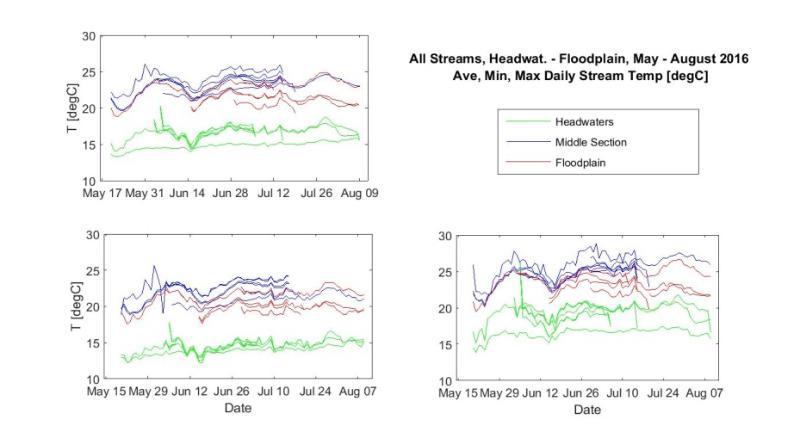ESS Senior Claire Parchem wins $10,000 Clare Boothe Luce research fellowship
Claire studied the impact of drought conditions in urban streams with ESS faculty member Iris Stewart
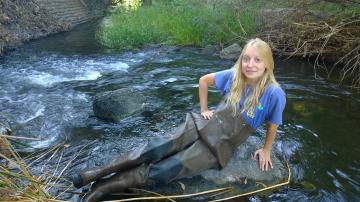
Environmental Science senior Claire Parchem (’16, WET track) won a $10,000 Clare Booth Luce research fellowship for this spring and summer. The Clare Booth Luce foundation has become the single most significant source of private support for women in science, mathematics and engineering. Her research investigates the effects of climate change and the California drought on urban stream flow and temperature environments. Together with assistant Hunter Donovan (rising ESS Junior), Claire donned waders to install stream temperature sensors, and measure stream flow and dissolved oxygen at selected sites in the urban creeks of Santa Clara county. When she was not wading in streams, Claire, with the mentorship of faculty member Iris Stewart-Frey, developed a matlab code to analyze the collected data.
After completing her research, Claire is headed for a position in a Silicon Valley tech firm, before deciding on graduate school in environmental science down the road. She will present her work at the annual meeting of the American Geophysical Union, the largest Earth Science conference worldwide, in December. Congratulations, Claire!
Urban streams provide important aquatic and riparian habitat close to population centers, as well as other ecosystem services such as flood protection, storm water drainage and recreational functions. Yet, they are already greatly impacted by human action through water management, channel modifications, destruction of riparian habitat, and pollution. This has potentially rendered them more vulnerable to the climatic extremes projected from climatic changes. From 2012 – 2016, California has experienced to date the most severe drought since the beginning of weather recordings. The combination of the resulting extremely low stream flows exacerbated by low precipitation, high evaporation rates, and greater human demand on water, with high temperature have increased the temperature regime in urban streams. However, the extent to which urban stream temperatures are impacted by extreme climatic conditions and what role stream morphology, stream flow characteristics, and riparian vegetation play, are not sufficiently understood.
For this project, Parchem, Donovan, and Stewart monitored stream temperature, dissolved oxygen, and flow depth along a network of 18 sites in the Los Gatos Creek, Guadalupe River, and Coyote Creek, located in the urban regions of the southern San Francisco Bay Area. Monitoring sites were distributed from stream headwaters to flood plains and represented a variety of stream environments. The group examined the variation in stream temperature and dissolved oxygen with extreme air temperature, extremely low flow conditions, riparian shading, and channel morphology. Preliminary results show that during the recent drought, hourly stream temperatures rose up to 34°C during summer heat waves for sites in the lower stream reaches without riparian shading. By contrast, shaded sites with deeper flows, and minimally affected by water management were able to maintain lower temperatures by several degrees. Understanding the conditions driving the response of urban streams to climatic extremes can aid in the protection of aquatic ecosystems under climatic change.
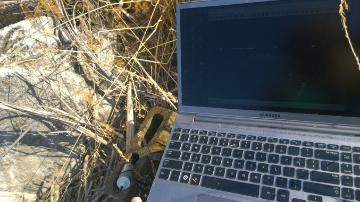
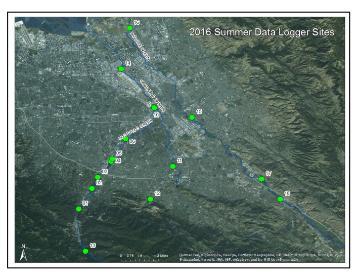
|
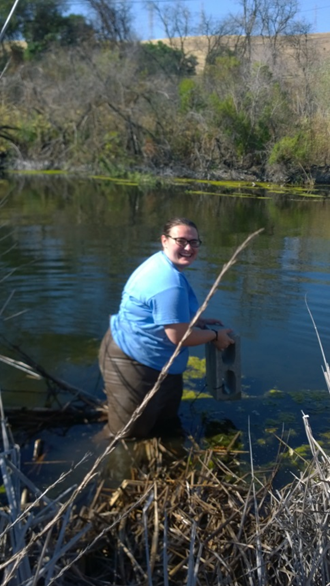
|
